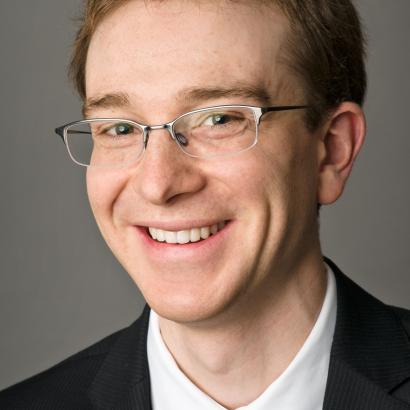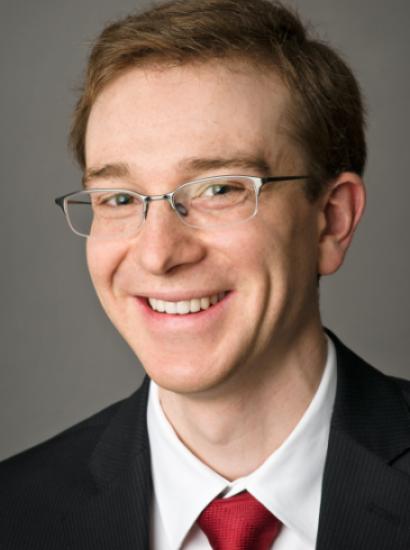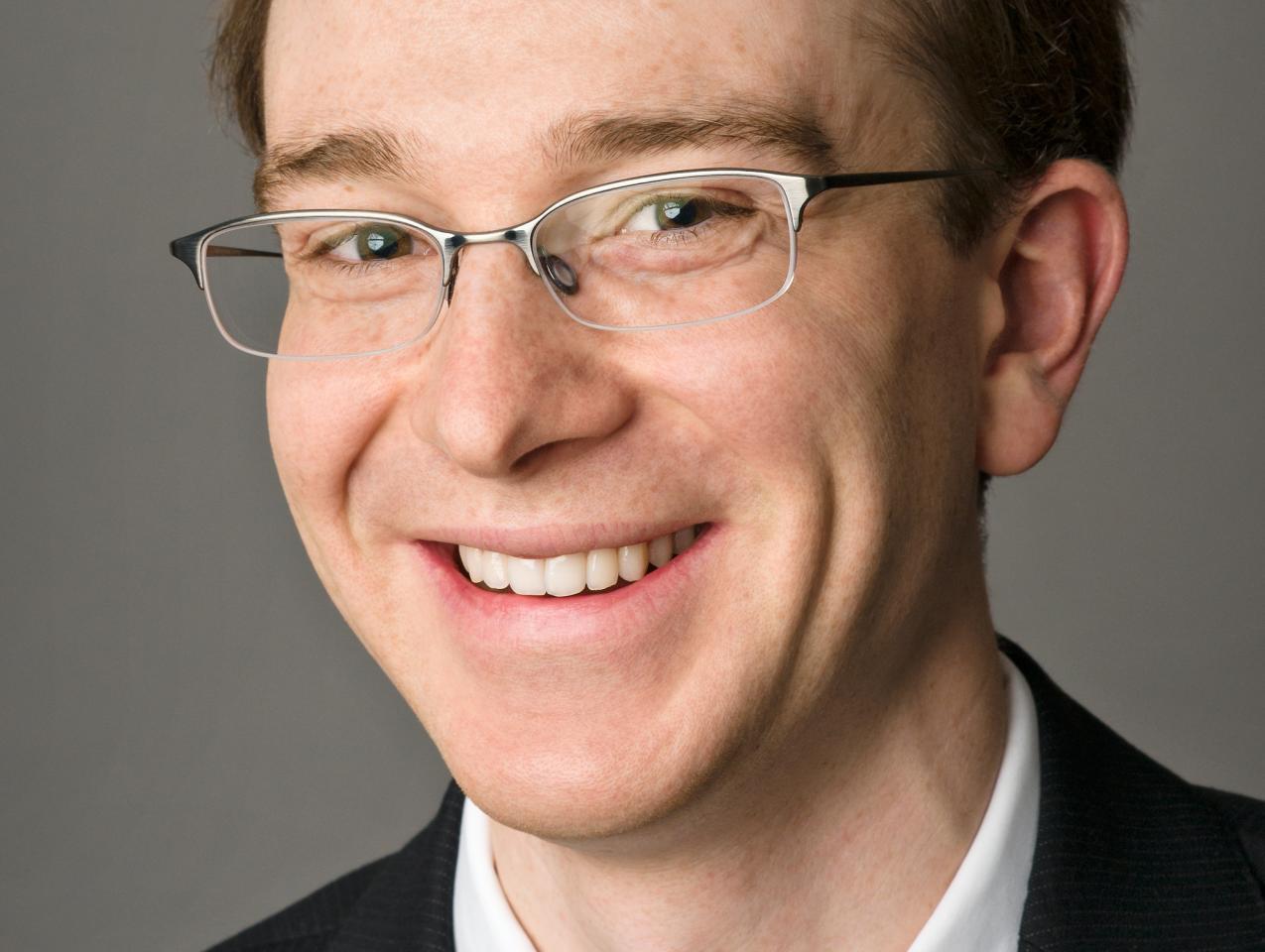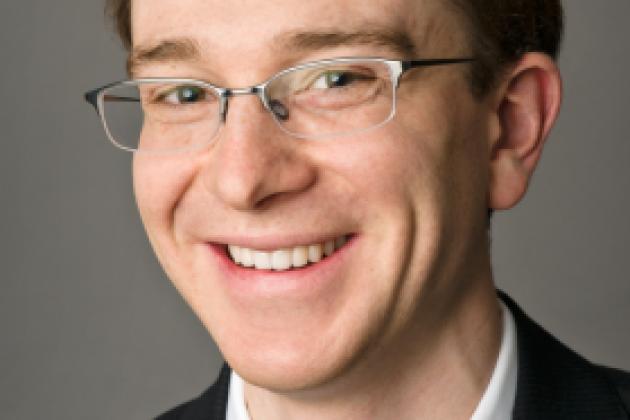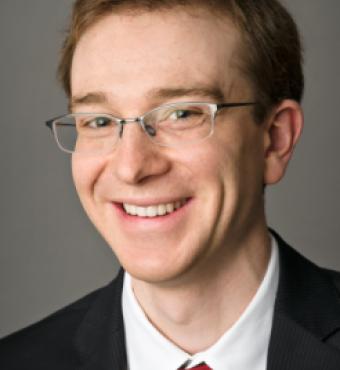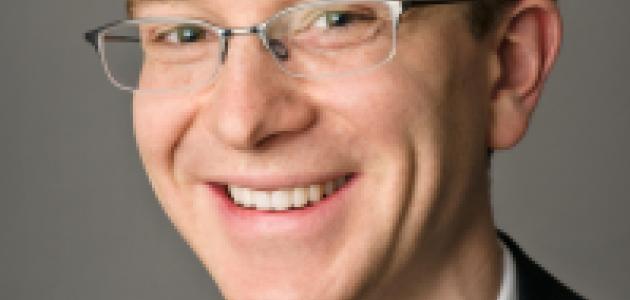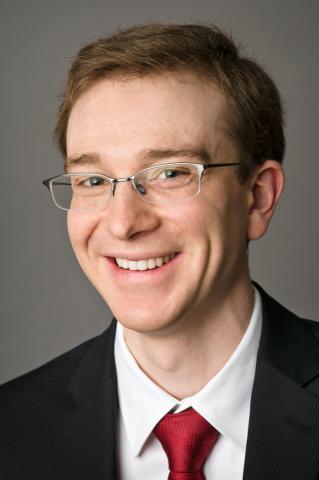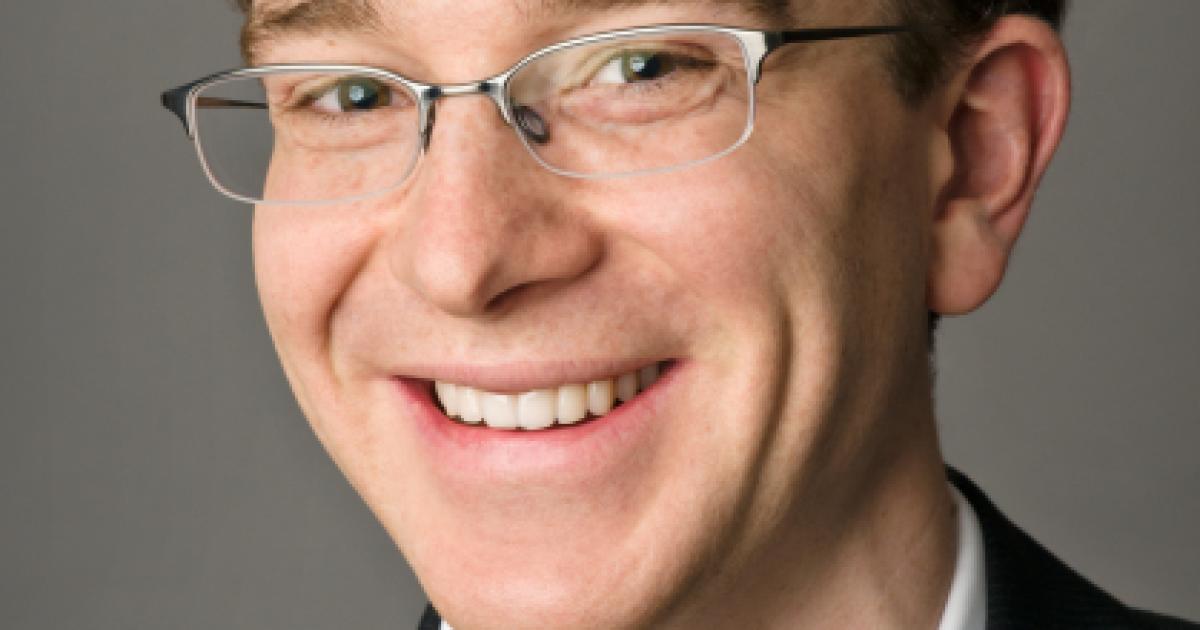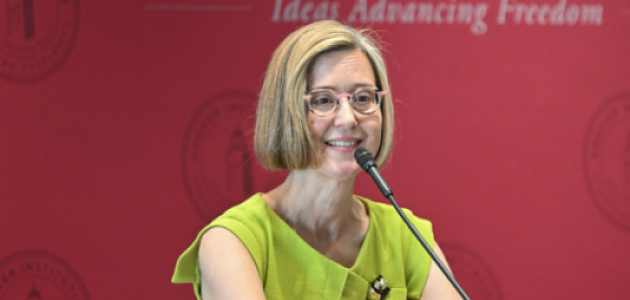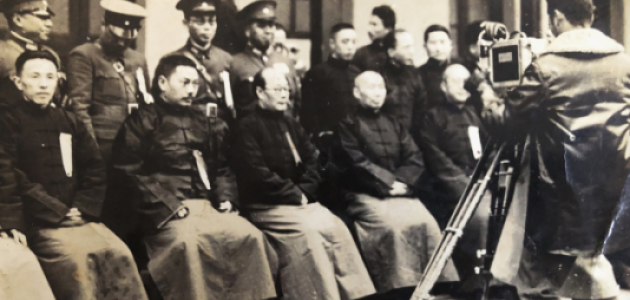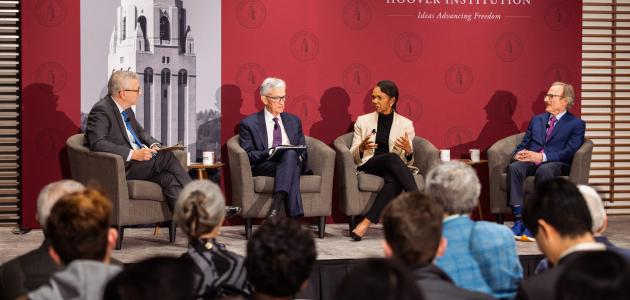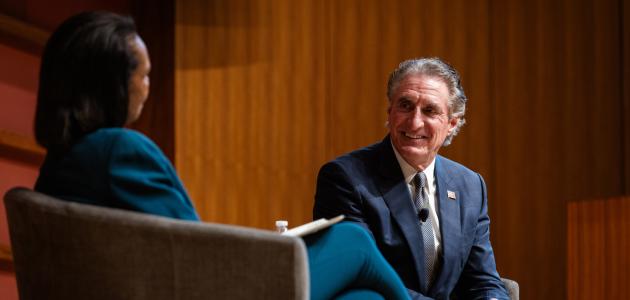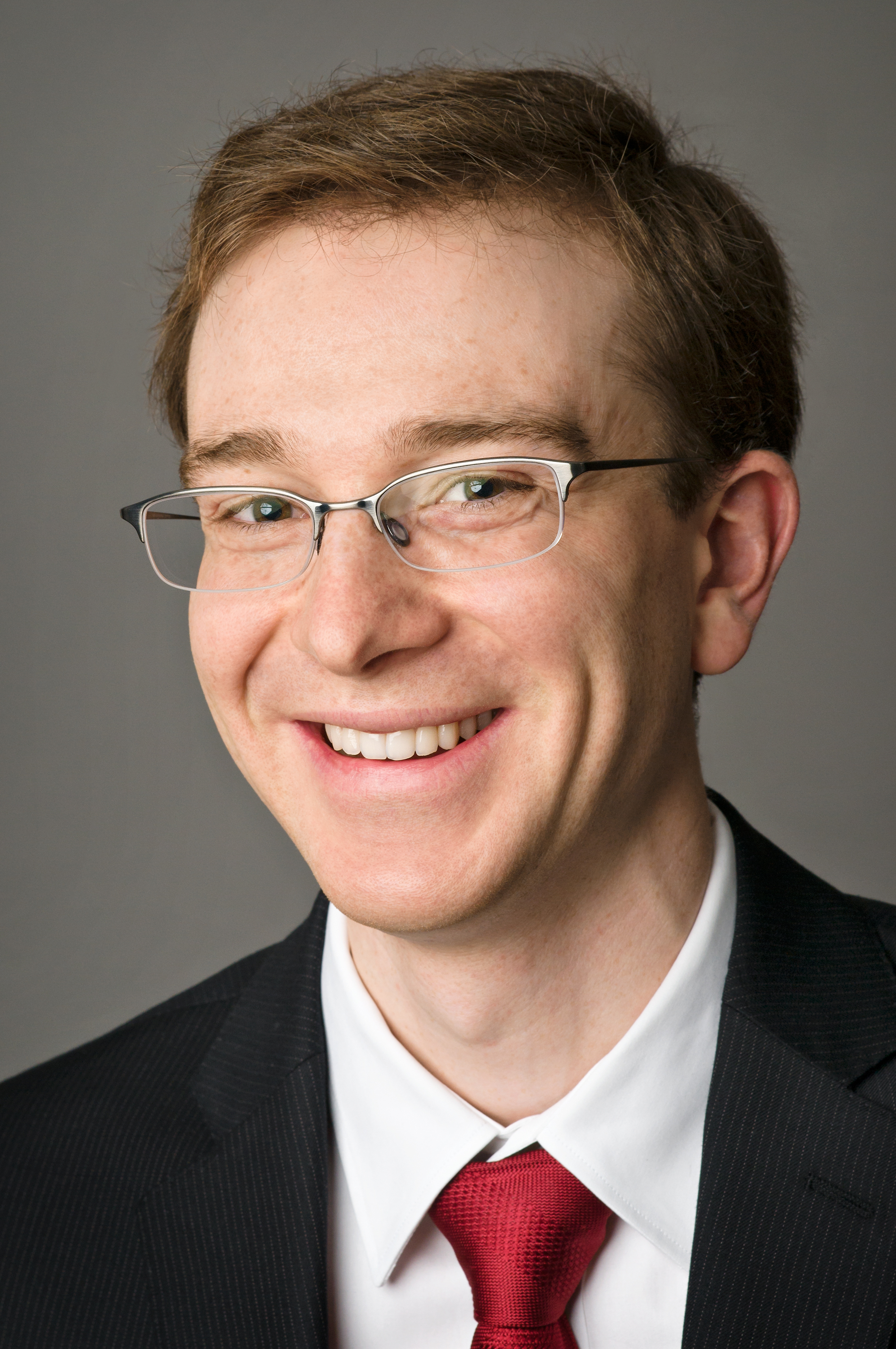
by Jonathan Movroydis
Valentin Bolotnyy is a Hoover fellow working on topics across public and labor economics.
In this interview, Bolotnyy discusses his research on improving the efficiency of services provided by the Massachusetts Bay Transportation Authority, as well as finding data-driven solutions to growing issues of anxiety and depression among graduate students. He also talks about his Ukrainian origins and his research in the Russia and Eurasia collection of the Hoover Library & Archives.
Can you tell us about your background?
I was born in Ukraine, in the eastern part of the country, to a Jewish family. We emigrated to the United States in 1997 as refugees. In the 1980s and ’90s, as the Soviet Union was collapsing, the United States, Israel, and others adopted policies that made it easier for religious minorities to escape the former Soviet Union. These countries had been pushing the Soviet Union throughout the Cold War to allow for the free movement of people in general and religious minorities in particular.
Hundreds of thousands of religious minorities left the Soviet Union and came to the United States as a result of that process. We settled in San Francisco.
Have you had a chance to explore the Hoover Library & Archives’ Russia and Eurasia collection?
The Hoover Library & Archives was the venue of my first foray into research. Norman Naimark, a Stanford professor of history and Hoover senior fellow, was studying Joseph Stalin’s crimes during the 1930s, as well as the 1989 revolutions in Eastern Europe that led to the collapse of the Soviet Union.
I had a deep interest in this subject because of my own immigrant experience. Since I know Russian, I was able to get a job as Norman’s research assistant, mostly to translate documents and gather the ones relevant for the research. It was really amazing to dive into the archives. What sticks out in my mind the most was looking through fonds 89, a huge collection of materials that the Russian government amassed after the collapse of the Soviet Union for a lawsuit against the Communist Party for its multitude of crimes. I believe the most comprehensive collection of these documents outside of Moscow is here at the Hoover Library & Archives.
I remember reviewing one particular memorandum in which an official was writing to Stalin saying, “There are 20,000 people who are enemies of the state that we will have to punish to the highest degree in our region.” Stalin wrote back on the document, in handwriting, “Increase that number to 25,000.”
During the premiership of Nikita Khrushchev, my great-grandfather was arrested and sent to prison for selling kitchen wares. He never made it out. Seeing that document right in front of me, the arc of my and my family’s journey from Ukraine to Hoover hit home, and it brought me closer to the history of the Soviet Union as well as to my own family history.
While an undergraduate at Stanford, what were your main academic interests?
I started off as a history major (I still have strong interests in history), but the financial crisis hit my sophomore year, and that took me into economics. My parents lost their jobs, and that motivated me to study the crisis.
Specifically, I wanted to look at why, if the US government had such a large regulatory apparatus, a housing crisis of this magnitude could still happen. Hoover senior fellow Michael Boskin advised me in my senior thesis on the role of the national affordable housing goals established by Congress for Fannie Mae and Freddie Mac. I zeroed in on the question of whether additional financing due to these goals contributed to the subprime boom. I analyzed geographic areas that barely qualified for the goals and compared them with areas that just did not qualify. I didn’t find that these housing goals had much impact, on top of what Fannie, Freddie, and the private sector were doing anyway.
My first job out of college was at the Federal Reserve Board in Washington, DC, where I worked in the Office of Financial Stability. The office was created in 2010, and I graduated in 2011. This was a very interesting time to work in this particular office, because it was very much on the front lines of the implementation of Dodd-Frank, stress-testing the banks, and fixing mechanisms within the financial system. This experience reaffirmed my interest in economics and motivated me to pursue a PhD in economics at Harvard.
What is your economic specialty?
I work mostly in applied microeconomics. As part of my graduate research, my Harvard colleagues and I worked with the Massachusetts Bay Transportation Authority (MBTA) in Boston. Its officials were especially interested in finding out why they have such high absenteeism among their drivers.
The MBTA affects millions of people who use public transit in the Boston area. It has a rigid and unionized work environment. When we analyzed their administrative and time-card data, we found that there was little managerial discretion in bus drivers’ earnings. The only factor that really mattered was seniority.
Even with so little managerial discretion and even for drivers with the same seniority, we found a gender earnings gap. As a result of the rigidity of the system, there was no way for drivers to trade shifts, and one of the only ways to adjust one’s schedule was to take unpaid leave. Women did this at higher rates than men, which resulted in much of the absenteeism that the MBTA was experiencing and in the earnings gap. Many of the overtime opportunities were also offered on short notice, and women accepted those at lower rates than men. When the opportunities were offered far in advance, though, men and women accepted them at similar rates.
We also found that when the MBTA further restricted drivers’ ability to adjust their schedules, drivers, especially women, were more likely to just not show up. We recommended greater flexibility within the scheduling system. We were also able to gain broader insight into social behavior and contribute to the gender earnings gap conversation.
Could you tell us about your work on the economics of mental health?
The graduate student mental health project came out of an immediate need. There was a suicide in the MIT economics PhD program when I was in my third year at Harvard. It hit close to home for a lot of us. One heard anecdotally that students were having a hard time with depression and anxiety, but we really didn’t understand the full scope of the problem.
My colleagues and I adopted tools from clinical psychiatry and did what economists do best: collect and analyze data. In our research across eight economics PhD programs, we found a high prevalence of serious mental health issues among graduate students in economics PhD programs—three times higher than in the general population. There is higher prevalence of these symptoms during the later years of the program, which are particularly unstructured and involve dissertation writing. These are also years of great consequence, as students are getting ready to enter the labor market.
We pointed to a number of factors for the high prevalence rates, including isolation and a general lack of social support. We also found that only 26 percent of students regularly felt that they were doing useful work. This was in contrast to 70 percent of faculty members and 63 percent of the general population.
We made a number of recommendations that focused on improving student-adviser relationships and cultivating stronger social connections among peers.
It made sense for me to work on these issues and on the issues faced by the MBTA because they were pressing and because I felt that an empirical social science approach could be helpful. These types of partnerships, of the kind we formed for these projects, can be extremely fruitful, for both academic research and the organizations themselves.
Can you tell us about your work in the area of immigration?
For one project, my coauthor Cristina Bratu and I looked at how the children of immigrants in Sweden did compared to the children of native-born citizens, conditional on where their parents started in the income distribution. Focusing on parents who are at the bottom of the income distribution, we found that immigrant children of these poor parents are more likely to experience one of two extremes, very low or very high-income mobility, than native-born children.
I also worked on the Immigrant Doctors Project in collaboration with other economists at Harvard and MIT. We looked at how different areas of the United States depend on doctors from six Muslim-majority countries whose citizens were banned from entering the United States in early 2017.
We constructed a map that highlighted the areas of the US where doctors from these six countries made up an especially high share of all practicing doctors. We found that people who lived in rural parts of the US and in areas with existing doctor shortages were the ones who depended on these immigrant doctors the most.
Can you tell us about your work in public infrastructure procurement?
This is a project I worked on with Shoshana Vasserman, when we were both students at Harvard. Shoshana is now an assistant professor at the Stanford Graduate School of Business.
We started the project wanting to understand why the construction projects of the Massachusetts Department of Transportation (MassDOT) were frequently going over budget and over deadline.
We found evidence that contractors are risk averse and that MassDOT’s current system of infrastructure procurement allows contractors to spread risk across different components of a construction project. Contractors are asked to place unit bids on each type of material to be used in construction. The winning contractor is the one with the lowest total project cost, based on MassDOT’s estimates of how much of each type of material the project will require. The winner, though, is ultimately paid based on actual quantities used. This might initially seem like a bad idea, because contractors might skew prices on individual items. This could look like gouging, but we find that it mostly reflects contractors trying to spread risk around the different material types.
We suggested that MassDOT could reduce costs by reducing project risk and increasing investments in more accurate construction plans. We also recommended it could reduce costs by incentivizing additional contractors to compete for projects.
We didn't quite answer, “Why is it so expensive for MassDOT to do these projects?,” but we did shed light on bidder behavior and on how costs could be reduced.
Is there anyone at Hoover that has been influential in your research?
Most recently, I have especially benefitted from talking to Michael Boskin, Eddie Lazear, Niall Ferguson, and John Cochrane. Many others at Hoover, scholars like Norman Naimark and Larry Diamond, have influenced my research over the years.
What are some other future research opportunities that you're excited about?
I am excited about a couple of projects that involve partnerships with the public sector. In one project, we’re working with Veterans Affairs to study veteran mental health and whether incidents of violence here at home can worsen PTSD and other pre-existing mental health issues.
My collaborators and I are also working with the Texas Department of Public Safety to study the effects of recent bail reform in the state and to study how natural disasters affect crime.
The questions are wide ranging, but the ultimate goal is to use the empirical microeconomics toolkit to help solve pressing social problems.







